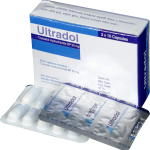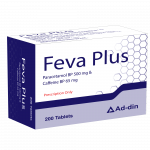Composition
Ketorolac Tromethamine USP 30 mg IM/IV
Pharmacology
Ketorolac is a non-steroidal anti-inflammatory drug (NSAID). It inhibits synthesis of prostaglandins and may be considered as a peripherally acting analgesic. It is highly protein bound and is largely metabolized in liver. The products of metabolism and some unchanged drugs are excreted in the urine. The primary route of excretion of ketorolac tromethamine and its metabolites is renal: 92% (mean) of a given dose being found in the urine and 6% (mean) in the feces. More than 99% of the ketorolac tromethamine in plasma is protein-bound over a wide concentration range.
Indications
Ketorolac is very effective for the short-term management of moderate to severe & acute post-operative pain.
Dosage and administration
Usual Dose
Descriptive Doses:
Tablet:
| Patients Age | Dosage |
| <16 years of age | Not established |
| <65 years | 10mg 4-6 hourly. Maximum daily dose 40mg. Maximum 7 days |
| >65 years of age or renally impaired or body mass <50kg | 10mg 4-6 hourly. Maximum daily dose 40mg. Maximum 7 days |
Note: When converting from parenteral to oral administration, total combined dose on the day of conversion should not exceed 120 mg (60 mg for >65 years of age or renally impaired or body mass <50 kg) of which the oral should not exceed 40 mg.
Contraindications
* History of peptic ulcer or gastrointestinal bleeding
* Suspected or confirmed cerebrovascular bleeding
* Hemorrhagic diatheses, including coagulation disorders
* Patients with hypersensitivity to Ketorolac Tromethamine or other NSAIDs and patients in whom Aspirin or other prostaglandin synthesis inhibitors induce allergic reactions.
* Patients with the complete or partial syndrome of nasal polyps, angio-edema or bronchospasm
* Concurrent treatment with other NSAIDs, Probenecid or Lithium salts
* Hypovolemia from any cause or dehydration
* Moderate or severe renal impairment (serum creatinine>160mol/L)
* A history of asthma
* Patients who have had operations with a high risk of hemorrhage or incomplete hemostasis
* Patients in anticoagulants including low-dose heparin ( 2500-5000 units 12 hourly)
* During pregnancy, labor, delivery or lactation
Precautions
Precaution should be taken in elderly, allergic disorder, renal, cardiac and hepatic impaired patient with low body weight.
Side-Effects
Gastro-intestinal disturbances including discomfort, nausea, diarrhea, occasionally bleeding and ulceration, taste disturbances, anorexia, abdominal pain, dyspepsia, headache, dizziness, restlessness, drowsiness, insomnia, dry mouth, flushing, bradycardia, palpitation, chest pain, hypertension, dyspnea, asthma, malaise, paresthesia, urinary frequency, thirst, sweating, myalgia, visual disturbances, pain at injection site.
Use in Pregnancy & Lactation
Pregnancy category C & Contraindicated to nursing mother.
Drug Interaction
Increased risk of haemorrhage when Ketorolac is given with anticoagulants and NSAIDs.
Storage
Store in a cool and dry place, away from light. Keep out of the reach of children.
Packaging
Ketorolac Tromethamine USP 30 mg IM/IV.






